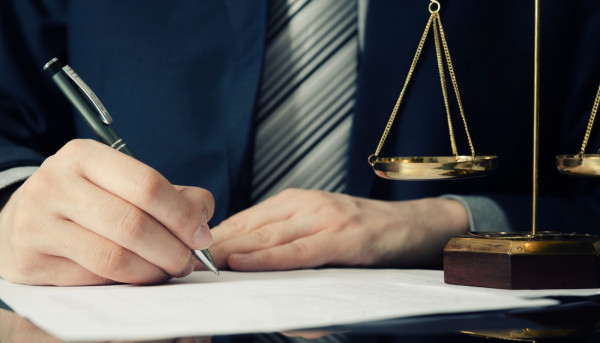- All Plans
- Yahoo Press Release
- Bloomberg Press Release + Yahoo Finance
- Business Insider Press Release
- Benzinga Press Release
- Digital Journal Press Release
- US Times Now Press Release
- AP News Press Release
- Yahoo Finance Press Release
- Street Insider Press Release
- MSN News Press Release
- USA Today Press Release
Trademark Infringement: Navigating Legal Risks and Responsibilities


United States, 7th Feb 2025 – Trademark infringement is a significant legal concern that arises when an entity uses a mark that closely resembles an existing registered trademark, leading to potential consumer confusion. Trademarks play a crucial role in brand recognition, helping businesses differentiate their products or services from competitors. Understanding the legal implications of trademark infringement is essential for business owners, legal professionals, and consumers navigating the complexities of intellectual property law.
What Constitutes a Trademark?
A trademark is a distinctive word, phrase, symbol, logo, or design that uniquely identifies the goods or services of one entity and differentiates them from others. Businesses can register their trademarks with organizations such as the United States Patent and Trademark Office (USPTO) to secure exclusive rights and protection against unauthorized use.
Trademark protection ensures that businesses maintain their brand integrity by preventing others from using similar marks that might cause confusion or damage their reputation. Notable trademarks include Nike’s swoosh logo, McDonald’s golden arches, and Apple’s bitten apple emblem.
Recognizing Trademark Infringement
Trademark infringement occurs when:
- A party uses a mark that is either identical to or closely resembles a registered trademark.
- The mark is used in connection with products or services that are similar to those protected by the registered trademark.
- Consumers are likely to be confused about the origin of the products or services.
Courts often rely on the “likelihood of confusion” test to determine infringement cases. Factors considered include:
- The degree of similarity between the marks
- The similarity of the products or services offered
- The strength and recognition of the original trademark
- Evidence of actual consumer confusion
- Marketing strategies and distribution channels
- The intent behind the alleged infringement
Notable Trademark Infringement Cases
Several landmark cases have influenced trademark law, underscoring how businesses safeguard their brand identities. Some well-known examples include:
- Nike vs. Bape (2023) – Nike sued Bape, alleging that its sneaker designs closely mirrored the Air Force 1, leading to consumer confusion.
- Apple vs. Prepear (2020) – Apple took legal action against Prepear, arguing that its pear-shaped logo bore excessive resemblance to Apple’s iconic logo.
- Adidas vs. Forever 21 (2017) – Adidas sued Forever 21 for incorporating stripe designs that resembled its signature three-stripe trademark.
These cases highlight how fiercely companies protect their brand assets to maintain market presence and prevent dilution.
Legal Ramifications of Trademark Infringement
Entities found guilty of trademark infringement may face serious legal and financial penalties, including:
- Cease-and-Desist Orders – Courts may mandate the infringing party to halt the use of the disputed mark.
- Financial Damages – Infringers may be required to compensate the trademark owner for financial losses incurred.
- Legal Expenses – The defendant might be liable for covering the plaintiff’s legal fees.
- Product Recall and Destruction – Courts may order the removal or destruction of infringing goods from the market.
Preventing Trademark Infringement
Businesses can take proactive measures to avoid trademark disputes by following these key strategies:
- Conduct Thorough Trademark Research – Before adopting a brand name, logo, or slogan, businesses should perform an extensive search in trademark databases like the USPTO.
- Secure Trademark Registration – Officially registering a trademark grants legal protection and strengthens the owner’s position in potential disputes.
- Seek Legal Guidance – Consulting with an intellectual property attorney helps businesses navigate trademark regulations and avoid legal pitfalls.
- Monitor and Defend Trademarks – Brand owners should actively oversee their trademarks and take prompt legal action against unauthorized use.
Conclusion
Trademark infringement is a critical issue with potentially severe consequences for businesses and individuals alike. Registering and protecting trademarks ensures brand longevity, market distinction, and consumer trust. By understanding the nuances of trademark law, businesses can mitigate risks and enforce their intellectual property rights while remaining compliant with legal standards.
The text above is for general informational purposes and should not be considered legal advice.
If you are experiencing trademark infringement litigation or would like to complete a trademark search or trademark registration, call Fishbein Law Group at (520) 668-5467 for a courtesy conversation.
Media Contact
Organization: Fishbein Law Group
Contact Person: Office Manager
Website: https://fishbeinlawgroup.com/
Email: Send Email
Country: United States
Release Id: 07022523454
